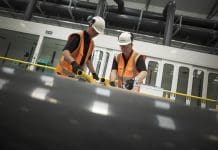Joseph Daniels, founder and CEO of Etopia Group, discusses why lenders will need to look to modular housing to comply with their ESG objectives, future-proof their loan books and achieve their net-zero targets
Financial institutions are coming under increasing pressure to lower the carbon emissions linked to their loan books. But, while big oil is usually the main focus, mortgage lending and the funding of new housing developments is also coming under intense scrutiny.
The Department for Business, Energy and Industrial Strategy estimates that 31% of UK emissions can be attributed to the real estate industry. Given the scale of this number, the industry will need innovative, forward-thinking solutions to reduce emissions sharply. These solutions will require financial backing to ensure they are able to deliver a low carbon future.
Lloyds, the UK’s largest financial services firm, has vowed to work with its customers, governments and the market to help reduce the carbon emissions the bank finances by more than half by 2030. It will be doing so by introducing new products to the market, such as green mortgages – those that award favourable lending terms for homes that are more energy-efficient.
But for banks such as Lloyds, the transition to net-zero poses a problem: where can lenders look to park capital while simultaneously lowering the carbon footprint of their loan books?
Lending towards a greener future
Factory-built housing provides the ability for institutional capital to lend their way to a greener future through the rapid delivery of sustainable housing.
Precision-engineering techniques, that are being deployed in factories across the UK to create energy-efficient housing in half the time of traditional methods, is providing investors – especially large institutions – with a greener bay to park their capital.
By partnering with innovative construction companies, lenders can help to ensure their financing of future projects will assist with achieving the government’s net zero carbon target comfortably in time for 2050, comply with their own ESG objectives and deliver high quality, low carbon homes to assist in solving the wider housing and environmental crisis.
As the years continue to fly by and the pressure to achieve net zero intensifies, sustainable investing will continue to take centre stage as we look to avoid a climate catastrophe.
Beefing up green finance credentials
Lenders can position themselves strongly by beefing up their green finance credentials, through lending to companies who are building at least EPC B rated homes. This ensures their loan book is not overloaded with outdated, inefficient, carbon-emitting buildings.
Thanks to precision-engineering techniques, homes that are manufactured along production lines in a factory achieve, and often go beyond, the highest EPC ‘A’ rating. Latest government figures suggest over 12 million homes – equivalent to 60% of the UK’s total housing stock – are rated D or less, while under 0.2% of the UK’s housing stock is currently A-rated. A swing bigger than Bryson DeChambeau’s will be required to flip these numbers to where we need them to achieve net zero.
However, if lenders continue to finance substandard housing, then the impact will be felt far beyond their loan book. And it is not only emissions which will continue to rise. The bill for the retrofitting of existing stock, currently estimated to cost in the billions, will also shoot up. Given the government’s recently failed attempt to resolve this, with the £1.5bn Green Homes Grant being pulled 6 months after launch, it will fall to institutional capital to lead the way and prevent the retrofitting crisis from worsening.
The greening of financial institutions’ loan book serves a dual purpose, by demonstrating to both existing and potential investors that lenders are going above and beyond to mitigate risks to the planet and their future finances.
Using pioneering technology to build high quality, sustainable homes, much quicker than ever before, will be essential for us to have any chance of limiting global warming to the 1.5℃ target, as set out in the Paris Agreement. If the financing of these homes also enables lenders to future proof their loan book, then this can only be described as a win-win.

















